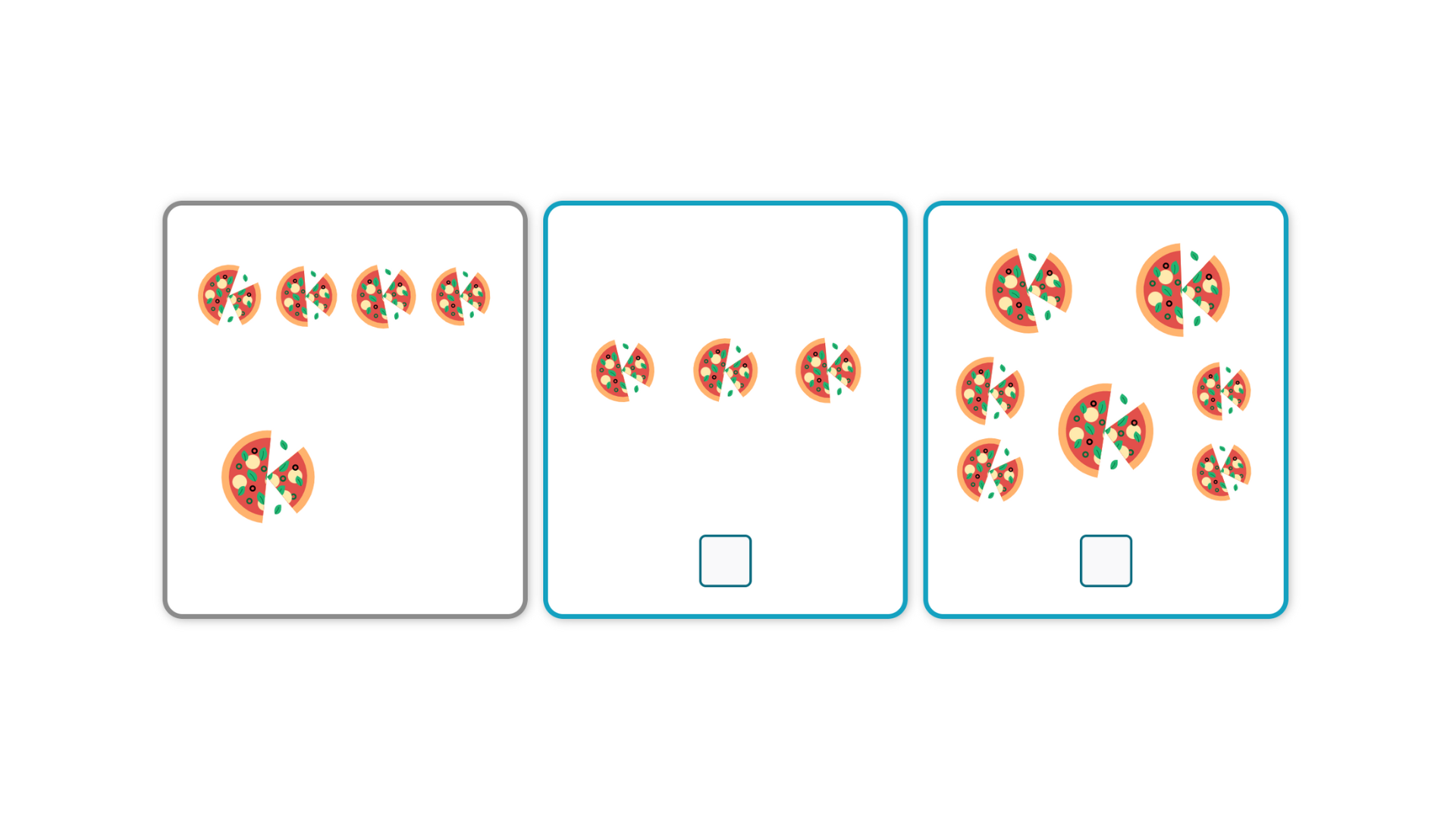Tips on how to use this exercise at home and at school.
Early math concepts
In this exercise, we are already trying to involve the passive determination of relationships: more than and less than. We are comparing two objects, so it is a number in the sense of not a number, but a comparison of two objects. The child already expresses the difference in a number.

Why is this exercise important?
When comparing quantities, the child uses the matching skills he already knows. By forming pairs, we allow the child to form an idea and understand the relationships: less than/more than. At this point, the numerical expression "How much more or less?" is added. The number now also has the meaning of comparison or change.
Who is the exercise suitable for?
Generally belongs in preschool or early school play. In addition to number concepts, and reasoning assumptions, it also develops language skills at the same time.
Methodological recommendations
Either read aloud the instructions to the child, play them from the app or let the child read them by themselves.
The child is shown two or three groups of pictures and instructed to decide where there are more or fewer objects and by how much. If the child has difficulty with these situations, we match the pictures together and find the answer by comparing them. This exercise leads to an abstract understanding of a number that expresses only a count (example: 4 cubes and 2 cubes) and a number that expresses a comparison (example: 1 more or 1 less cube). So far, we are only aiming for comparisons.
In the exercise setup, it is possible to select instructions individually, i.e. only for: more, less or random and the number ranges 0-5; 0-10; 0-20.
Tips for similar activities outside the app
You can compare using dice. You and the child roll the dice and compare: Who got the same number of points, more or less, and by how much?
More ideas for comparison activities: